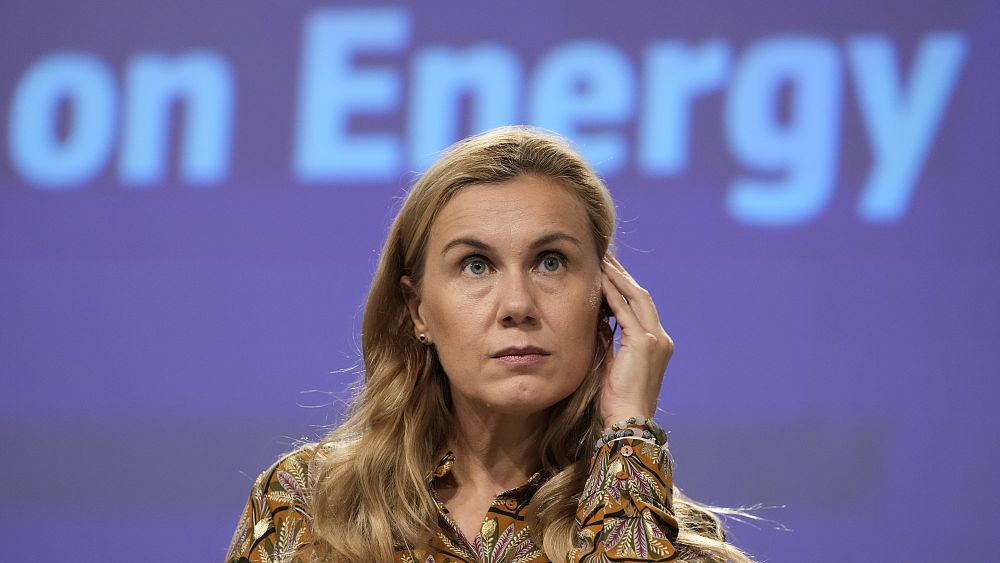
Faced with an energy crisis that is sending bills soaring and fuelling social discontent, EU countries have once again taken a precautionary approach to respect the current market rules and avoid any long-term damage, dealing a heavy blow to Spain’s public campaign for far-reaching reforms.
Gathering in Luxembourg for an extraordinary meeting, transport and energy ministers from the 27 member states sidelined reforming calls from southern EU countries and instead opted for temporary and targeted measures to help vulnerable households and struggling companies make it through the crisis, expected to last until April.
This approach, based on remedies like direct income support, state aid and tax reductions, builds upon a toolbox released two weeks ago by the European Commission.
Over 20 member states have already announced their intention to introduce some or all of these measures.
Spain, one of the worst-hit countries by the crisis, thinks the toolbox “is not sufficient” and has become increasingly vocal in its demands for “extraordinary solutions” worth of the “extraordinary context”.
Speaking to the press ahead of the ministerial meeting, Spanish State Secretary for Energy Sara Aagesen Muñoz urged her colleagues to be “much more ambitious” and deliver a “European response”, as opposed to the domestic measures proposed by Brussels and endorsed by a majority of member states, who believe the crisis is transitory and driven by a sudden global demand for natural gas that hasn’t been met with the necessary supply.
Following this thinking, most EU countries prefer to stay away from forceful market intervention that could cause lasting damage to the bloc’s integrated energy market.
“Transparent and competitive energy markets deliver efficiency and competitive prices to end-users,” a group of nine countries, led by Germany, wrote in a letter published ahead of Tuesday’s meeting. Sweden and Belgium later expressed their support for the joint statement.
“We cannot support any measure that conflicts with the internal gas and electricity market, for instance, and ad hoc reform of the wholesale electricity market.”
Spain, however, is not giving up. The country has circulated a new document presenting far-reaching action, including the “decoupling” electricity market prices, a proposal previously backed by France, Greece, Romania and the Czech Republic.
Today, the EU’s wholesale electricity market works on the basis of marginal pricing, also known as “pay-as-clear market”. Under this system, all electricity producers – from fossils fuels to wind and solar – bid into the market and offer energy according to their production costs. The bidding starts from the cheapest resources – the renewables – and finish with the most expensive one – usually natural gas.
Since most countries still rely on fossil fuels to meet all their power demands, the final price of electricity is often set by the price of coal or natural gas. If gas becomes more expensive, electricity bills inevitably go up, even if clean, cheaper sources also contribute to the total energy supply.
“Each +1 [euro/megawatt per hour] increase in the natural gas price represents 2.7 billion euros per year in additional electricity costs for all European consumers, diverting resources from the energy transition and economic recovery and every day it gets worse,” the Spanish document reads.
To avoid this “contagion effect”, Spain suggests the total electricity price should be calculated as an average price of all the energy sources used in a country’s mix. It also wants the set a maximum cap on the price of electricity produced by natural gas and establish a centralised platform for purchases.
“In exceptional situations, member states have to be allowed to adapt the electricity price formation to their specific situations,” Madrid says, in an apparent call to temporarily exit the EU energy rules.
In response, Kadri Simson, the European Commissioner for energy, came out in defence of the marginal pricing framework, describing it as the most efficient method to guarantee regular supplies, avoid blackouts, promote competitiveness and accelerate the green transition.
“It’s not fully clear how a system with prices for different power sources would work in practice and if it would be a better alternative to the current design,” Simson said on Tuesday.
However, on the Spanish proposal to create a strategic gas reserve for the whole European Union, Simson appeared more willing to at least discuss the idea for the long haul. She stressed there were still too many unanswered questions, like who would pay for the transport and storage of gas.
“We heard from many ministers that we should not rush into rash decisions,” the Commissioner added.
Speaking next to Simson, the Slovenian Infrastructure Minister Jernej Vrtovec, who represented the EU Council’s rotating presidency, said the ministerial meeting left “no agreed position” regarding market intervention and countries should rather focus on making the best use of the Commission’s toolbox.
“The [European] economy as a whole depends on energy prices. This could also lead to the rise of all other products and services and put the viability of companies at risk,” Vrtovec warned.
Both Vrtovec and Simson insisted the long-term solution out of the current and future energy crunches is the European Green Deal and the road to carbon neutrality through the deployment of renewable energy systems. Switching to cleaner sources would make the EU more independent and resilient while lowering costs for consumers.
Last year, renewables overtook fossil fuels as the number one power source across the EU for the first time, generating 38% of electricity, compared to 37% for fossil fuels.
EU leaders will have a new chance to debate about rising energy prices in their next summit, scheduled to take place in Brussels in mid-December. In the meantime, the course of action has been settled: temporary and targeted solutions at the national level designed according to the country’s economic and social circumstances.